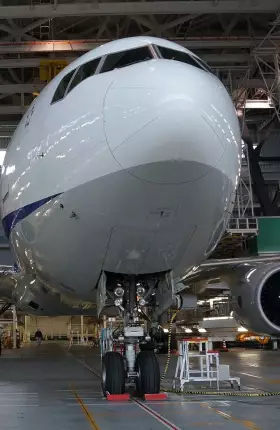The aerospace and defense (A&D) industry faces much tougher market conditions today than it did a decade ago. Most governments are reducing their overall military spending and focusing their shrinking budgets on a smaller number of core programs and systems. Government and civilian customers are emphasizing affordability rather than sophisticated features. (Although the Trump administration is calling for an increase in US defense spending, it will also likely push to keep prices down for individual platforms and systems.) In this environment, prime contractors and tier one integrators need to reduce costs in order to win contracts and preserve margins.
Traditionally, prime contractors and tier one integrators (which we’ll refer to as OEMs) have struggled to pass cost reduction targets along to their suppliers, which have gotten better over time at masking the true costs of their products. As a result, suppliers have managed to increase their gross margins over the past several years, despite a challenging market overall in which margins for OEMs have flatlined. (See Exhibit 1.)
A year ago, we wrote about how defense companies can improve their approach to procurement. (See “ A New Procurement Strategy for Defense Contractors ,” BCG article, February 2016.) This publication discusses three tactical steps that both aerospace and defense OEMs can take to improve their overall supply-chain performance, meeting customer expectations for affordability while still generating attractive margins.
First, companies need to improve and standardize their internal procurement processes across the entire organization, to quickly reduce costs and free up capital that can be used to fund more ambitious initiatives. Second, they must negotiate more effectively with their suppliers by generating a more accurate picture of suppliers’ true costs. Finally, companies need to build the underlying capabilities required to capture gains in a sustainable manner over the long term.
Unique Challenges to A&D
Several factors make A&D companies unique in how they have handled procurement in the past. One is the structure of government contracts for defense programs, which have historically paid on a cost-plus basis, reducing the incentive for companies to focus on operational efficiencies throughout the supply chain. Stringent regulatory requirements and long product life cycles are factors as well. For both defense and commercial platforms, programs can last for decades. Once suppliers are certified to produce a specific component for a specific platform—such as a radar system on a fighter jet or an avionics component on a commercial jet—they face little competition for that business over the length of the contract. It’s simply too expensive or time-consuming to get another supplier certified. Knowing that these challenges are in place, suppliers negotiate prices from a position of strength.
Moreover, A&D products are highly customized and manufactured in relatively low volumes compared with many other industrial engineered products. That means manufacturers are challenged to generate scale efficiencies. And industry consolidation has led to the supply chain for many companies being an aggregated group of smaller plants and businesses.
Because of these factors, many companies have built up specific processes that may have worked in the past but no longer do. For example, OEMs often take a highly fragmented approach to procurement, working with suppliers on the basis of individual programs—or individual manufacturing plants—rather than aggregating purchases across the enterprise. The result? Relatively immature supply-chain processes, along with unnecessarily high overhead. Suppliers are locked in early, and buyers have limited insights into cost data.
Three Priorities
The current focus on affordability—among both defense and commercial buyers—means that the old approach is no longer enough. OEMs must take dramatic and concerted steps to improve their supply-chain performance. On the basis of our experience, we have identified three clear priorities. (See Exhibit 2.)
Improve and Standardize Internal Procurement Processes
The first step is to establish standardized internal procurement processes, to make sure the entire organization is coordinated in consistently applying best practices. These are akin to basic blocking and tackling, yet they are surprisingly rare at many large A&D companies. Instead, facility managers tend to apply a firefighting mindset in which they focus on achieving short-term tactical goals, processing transactions, and hitting their numbers. In our work with clients, people say things like “I always order extra so we never have any shortages” and “I don’t have time to negotiate purchase orders.” A more comprehensive approach to internal processes can help rectify this problem.
Transparency. Giving people in procurement roles greater access to data can help them understand how supply chain performance affects the overall performance of their business unit. For example, individual locations need to track purchases over time and then aggregate this information across programs, sites, and business units. When a plant manager orders a specific component, he or she should be able to see the price the company paid for past purchases, along with any volume discounts.
Checklists and Tools. In addition, companies should generate standard checklists and tools for managers to use before making purchases. The checklists could suggest considerations such as whether a supplier offers a related part that may be less expensive but still usable for a given application. The tools could be spreadsheets and models that help managers quickly compare prices for components and other supplies, benchmark performance across the company, and analyze trends. And managers should have a clear idea of needs—regardless of whether the supplier requires a minimum order quantity. The goal should be not merely to avoid running out of a component but also to minimize inventory.
Training and Follow-Through. Often, procurement teams require initial training sessions to ensure that people understand how to use the new tools and—critically—why they’re needed. Once the implementation phase is complete, some companies develop inventory dashboards that allow managers to actively track material availability and costs. Clear KPIs can ensure that everyone is working toward the same objectives. Scorecards can rate supplier performance.
Bundled Purchases. Although some components and materials from suppliers are unique to specific platforms or systems, others get used across multiple products in the portfolio. In these cases, companies should bundle purchases of specific components—or of multiple products from a single supplier—to secure volume discounts. In addition, engineers should design new products with an eye toward standardizing components that the OEM is already purchasing, rather than designing a new system from scratch. That allows the company to generate stronger scale advantages in procurement over time.
Net Working Capital. Finally, while these improvements will lead to less inventory and thus improve net working capital, companies could also be more deliberate in how they manage accounts payable and accounts receivable to free up cash. By understanding and maximizing payment terms, and improving their payment cycle by even a few days, large companies can free up millions in cash, which can have a big impact in a capital-intensive industry.
These are not radically innovative measures, but they are no-regret moves that companies can implement quickly to unlock capital and make sizable gains in supply chain performance. In all, these measures can lead to a reduction in purchase price variance of 10% to 15% per site.
Negotiate More Effectively with Suppliers
Many A&D companies believe they don’t have sufficient leverage to persuade their suppliers to cut costs, especially entrenched suppliers that are attached to major programs. These companies essentially give up the game before it even starts. Although negotiations are not easy, there are some proven measures that A&D companies can take to get better.
Determine a defensible target price. Many manufacturers often have little understanding of the underlying economics for a component from a given supplier. Accordingly, the first step is to generate an accurate target price for what the component should cost. Companies can apply several methodologies to accomplish this, including top down and bottom up.
In the top-down approach, companies look at how a supplier’s costs for a specific component move down the experience curve. For highly advanced equipment, the first finished product off the assembly line costs far more than the hundredth, which in turn costs far more than the thousandth. The rate of decline for the total system cost is standardized—typically along a logarithmic relationship—on an experience curve. Given the number of units, the type of assembly required, and the initial starting cost, the experience curve shows what a best-in-class supplier should be charging after a certain volume.
There are several bottom-up approaches to determining a target cost. The bill-of-materials approach entails looking at the subcomponents of a given piece of equipment. Those are generally available on the open market, and companies can determine a fair cost for each of them, along with labor costs to assemble them.
Companies can also look at the price of similar components with related capabilities. For example, if a supplier manufactures a fuel system for a single-engine fighter jet and the hundredth unit costs $1.5 million, the company can use that as a baseline to extrapolate an estimated cost for the hundredth unit of a fuel system for a twin-engine jet that is 25% more advanced.
None of these approaches is perfect, but by using all of them, companies can develop a range for the correct target cost of a specific component. That gives them a credible and quantifiable basis for negotiating with the supplier to reduce costs.
Develop leverage points with the supplier. Another way to negotiate more effectively with suppliers is to understand potential points of leverage. In many cases, companies can gain far more leverage than they think by applying available data in some areas and getting creative in others. First, however, OEMs need to understand how the supplier generates profits and how that profit pool is likely to grow over time.
For example, some suppliers make most of their money selling to OEMs as part of the initial contract for a platform or system. Others make more by selling directly to the government (or to foreign governments). Still others focus on the aftermarket sales of replacement spares for equipment that wears out over time or on servicing products already on the market. By understanding a supplier’s business model, the company can determine how best to position its argument in order to create leverage with the supplier during negotiations.
To that end, the company could offer to strengthen the relationship by, for example, inviting the supplier to bid on subsequent programs, offering key logistics services, or adjusting payment terms to step down costs slowly over time. Companies can also alter demand (by increasing or decreasing future orders, or potentially designing the supplier out of future iterations of the platform). And they can alter supply (by helping to develop and certify a competing supplier, designing specs out to entice other companies to compete for the business) or look to vertically integrate and begin producing the component internally.
Negotiate. Finally, A&D companies should use the insights they developed regarding the target price and the supplier’s points of leverage to negotiate more effectively. Many companies believe that they’re good at negotiating, but we think that most have room to improve. The most important elements—which are universally applicable in any negotiation—include the following:
- Aim high at the outset.
- Argue on the basis of facts and data.
- Consider the supplier’s perspective.
- Be clear about the ramifications if the supplier isn’t willing to negotiate.
Most important, companies must be coordinated, organized, and consistent in their negotiations. For example, it’s highly likely that the initial conversation will lead to follow-on discussions with more senior people on both sides. A&D companies need to present a united front in which everyone involved is clear on the target cost, rationale, main messages, and likely next steps.
Build Key Capabilities
Many A&D companies have already taken steps to reduce costs through procurement, but these have often been one-off measures that did not lead to lasting improvements. Instead, we believe companies should invest in tools and build the underlying capabilities—the organizational “muscles”—needed for more lasting gains. (See the sidebar below.)
A CONTRACTOR TRANSFORMS ITS SUPPLY CHAIN
A large defense contractor needed to reduce the cost of its external purchases to adapt to an evolving market with fewer programs and a greater emphasis on affordability. The company launched a comprehensive supply-chain transformation to better understand supplier costs and increase its leverage in negotiations. It launched pilots in major spending categories, including the following:
- Complex electronics systems and software
- Commodities such as raw materials, composites, and basic parts
- Other categories, such as IT, travel, freight, and contract labor
By leveraging new approaches and tools, the pilot teams generated an average of 20% in supplier cost reductions (more than $280 million overall). On the basis of this initial success, the company created a training program to roll the transformation out to the entire organization. It developed standardized toolkits and a governance structure that would allow managers to collaborate across business units. It also applied change management principles—including incentives and frequent check-ins during the implementation process—to make sure the new approach took root.
As a result, the company is on track to save more than $500 million each year across its network of suppliers.
Among specific tools, companies can apply analytics to more accurately track component costs, along with design evaluation tools that help identify cost reductions earlier in the product development process. Similarly, companies can use playbooks that clarify the best practices and typical cost reduction levers to use when purchasing products and services that fall under different federal acquisition regulations.
However, simply using new procurement tools and tactics is not enough. In addition, A&D companies need to develop internal capabilities in the procurement team. Many OEM buyers have built up significant inertia in their procurement methods; they may have been buying goods and services from the same suppliers in the same way for so long that they no longer aggressively challenge proposed pricing as they once might have. In these cases, buyers may need support in developing a fresh perspective regarding costs, digging into the underlying assumptions for those costs and assessing new data to push back effectively.
In the current A&D environment, a business-as-usual approach to the supply chain will no longer work. Instead, companies must become far more proactive in assessing their performance, understanding where they are falling short and taking deliberate steps to improve. Success won’t come easily: at some organizations, it will require a sizable shift in processes and mindsets. Yet there are clear and material opportunities for companies that get it right.












